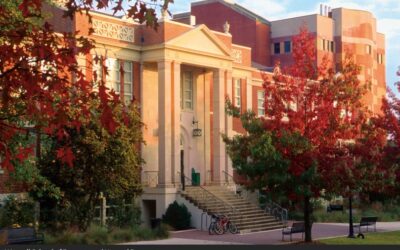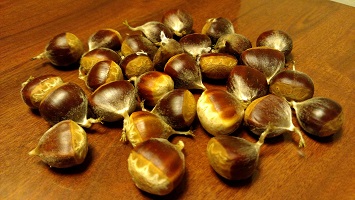About Us
Our Mission
Our mission is to bring about the restoration of the American chestnut tree as a prominent part of Georgia forests.
The Georgia Chapter was founded to bring about the restoration of the American chestnut tree as a prominent part of Georgia forests by assisting the national foundation in its propagation efforts, by promoting public awareness through education and by supporting the scientific research efforts of TACF directed at restoring American chestnuts.
Board of Directors
Executive Committee
President – Jack Rogers
Vice President – Kathy Patrick
Secretary – Zach Felix
Treasurer – Vince Payne
Science Coordinator – Dr. Caitlin Conn
Honorary Director – Mary Belle Price (posthumously)
Board Members
Dr. Zach Felix
Dr. Scott Merkle
Ana Metaxas
Dr. Caitlin Conn
Taryn Heidel
David Keehn
Scott Laseter
Brian Williams
Partnerships
The American Chestnut Foundation (TACF) and the Georgia Chapter (GaTACF) seek out partners that will not only help further its chestnut restoration program but also bring attention to the importance of the chestnut in American history. These partners include major universities, private foundations and businesses, as well as state and federal government agencies. With plantings at high-profile sites such as the Carter Center, Callaway Gardens Preserve, and the Atlanta Beltline Arboretum Project, GaTACF has been able to attract significant support from many partners throughout Georgia.
Each of our partners offers a unique perspective on chestnut restoration and gives GaTACF the best possible opportunity to be successful in its efforts to bring the American chestnut back to the forests of Georgia.
Georgia TACF Partner Organizations
- Atlanta History Center
- Berry College
- Bittersweet Gardens
- Bottletree Bees
- Byron Herbert Reece Farm & Heritage Center
- Carter Center
- Charlane Plantation
- Cloudland Vineyards
- Dalton State College
- Douglas County
- Elachee Nature Science Center
- Friends of Smithgall Woods State Park
- Georgia Department of Natural Resources
- Georgia State Parks
- Georgia Forestry Commission
- Georgia Governor’s Mansion
- Georgia Piedmont Land Trust
- Georgia State Botanical Garden
- Kennesaw State University (Research Farm)
- Kistner Center
- North Georgia Canopy Tours
- Pettit Environmental Center
- Rabun Gap Nacoochee School
- Reinhardt University
- Rising Fawn Gardens
- Runnin’ Wild Farms
- Smith-Gilbert Gardens
- The Blueberry Farm
- The Callaway Gardens Preserve
- The Carter Center
- Cherokee County Recreation & Parks
- Sandy Creek Nature Center
- The University of Georgia (UGA) Horticultural Farm
- The UGA Mountain Research & Education Center (GMREC)
- The UGA Warnell School of Forestry
- The Southern Company (Georgia Power)
- Toccoa Falls College
- Trees Atlanta and the Atlanta Beltline Arboretum
- University of North Georgia
- U.S. Army Corps of Engineers
- U.S.D.A. Forest Service
- Vogel State Park
- Young Harris College
FOR OUTSTANDING FINANCIAL SUPPORT WE WISH TO THANK
- Ailene Phillips Trust
- Dr. Austin Flint
- Berry College
- Eleanor & Tom Ratchford
- Georgia Appalachian Regional Commission
- Georgia State Specialty Crops Grant
- Lumpkin Coalition/Hemlockfest
- Dr. Martin Cipollini & Kathryn Patrick
- Mary Belle Price
- Rome Rotary Clubs
- Temple-Inland Foundation
- Urban & Community Forestry Commission
Latest News
GA-TACF Annual Meeting May 11, 2024
The American Chestnut Foundation Georgia Chapter (GA-TACF) Annual Meeting Announcement The Georgia Chapter of The American Chestnut Foundation will convene for its annual meeting on May 11th, 2024 at 10:00 AM, at the Warnell School of Forestry and National Resources,...
GA-TACF By-laws Update
Copied below is a draft of updated by-laws for GA-TACF that will be presented and adopted at the annual meeting at UGA, May 11. Many thanks to Scott Laseter for re-drafting these by-laws. Please excuse formatting errors and use horizontal scroll bars to read through...
American chestnut seeds available from GA-TACF
NOTE: We have allocated all of the seeds from the 2023 seed crop! We hope to run this promotion again next year (January 2025). Special offer for new or renewing GA-TACF members If you join TACF, renew a lapsed membership, or renew early plus add a donation of at...


